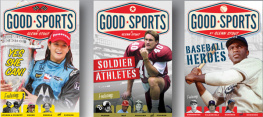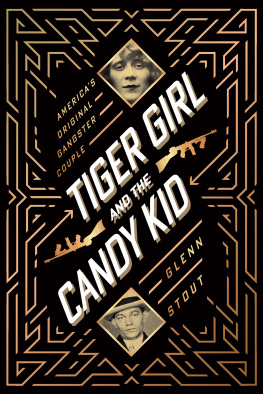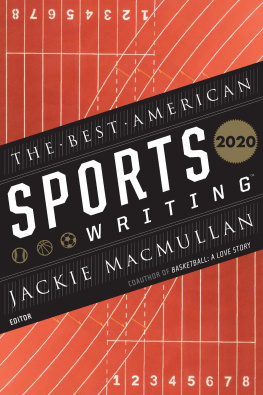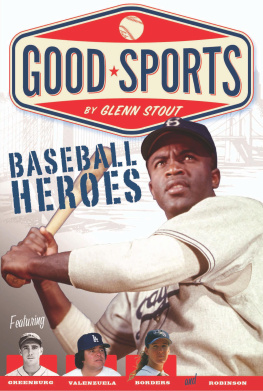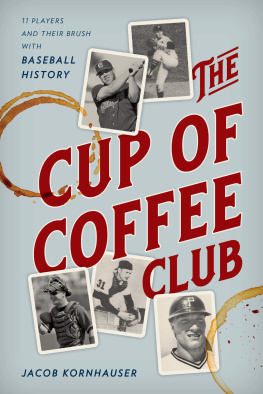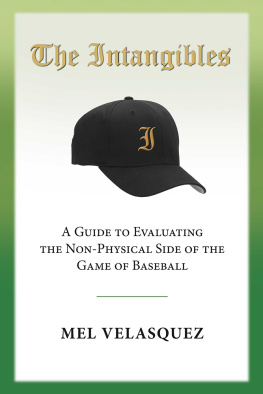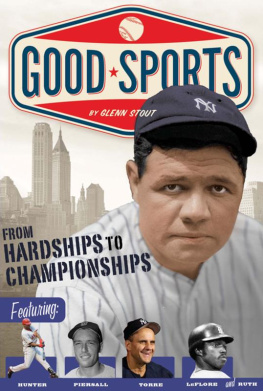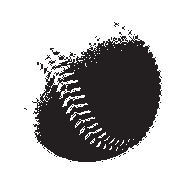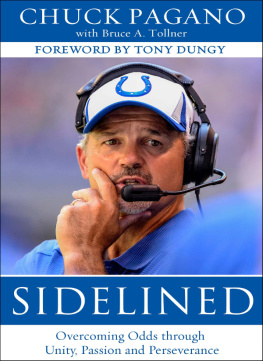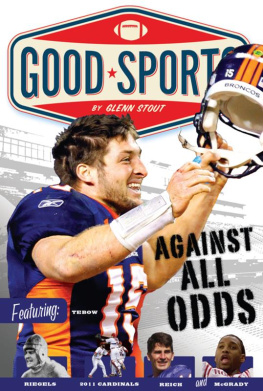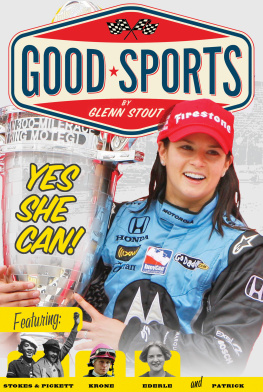Copyright 2012 by Glenn Stout
All rights reserved. Published in the United States by Sandpiper, an imprint of
Houghton Mifflin Harcourt Publishing Company.
SANDPIPER and the SANDPIPER logo are trademarks of
Houghton Mifflin Harcourt Publishing Company.
For information about permission to reproduce selections from this book,
write to Permissions, Houghton Mifflin Harcourt Publishing Company,
215 Park Avenue South, New York, New York 10003.
www.hmhbooks.com
The text of this book is set in ITC Slimbach.
Jacket art 2012: Mordecai Brown photo Library of Congress;
all other cover photos Associated Press Images
Library of Congress Cataloging-in-Publication Data
Stout, Glenn, 1958
Able to play : overcoming physical challenges / by Glenn Stout.
p. cm.(Good sports)
ISBN 978-0-547-41733-2
1. Baseball players with disabilitiesUnited StatesBiographyJuvenile
literature. I. Title.
GV865.A1S815 2012
796.3570922dc23
[B]
2011020502
Manufactured the United States of America
DOC 10 9 8 7 6 5 4 3 2 1
4500343990
This book is dedicated to everyone who
tries hard and gives his or her best effort.
Introduction
No one is perfect. And though each of us has flaws and problems, we are defined by how we live our lives. Our limitations are not who we are.
Those who have a physical condition that affects his or her ability to do something were once referred to as either "crippled," "handicapped," or "disabled," all words that focused on what a person could not do rather than what they could. Some people with a physical disability, disease, or impairment were often shunted aside and not even allowed the opportunity to prove what they could accomplish.
Fortunately, today we realize that everyone is different. With practice, hard work, and determination, each of us can turn a disability into a challenge that can be overcome.
I know this myself. I write for a living, but I have a nerve problem with one of my hands that makes it hard for me to make my fingers go precisely where I tell them to go. As a result, I cannot type using all my fingers like most other writers. I once took a test that said because of this problem, I should not try to be a writer. I ignored the test and followed my dream. I have learned to type using just a few fingers and have since written and published millions of words.
Although it might not always be possible to do everything you want to do, the ballplayers profiled in Able to Play demonstrate that it is always worth trying. If you don't try, you will never know just how much you can achieve.
MORDECAI BROWN AND THE CURVEBALL
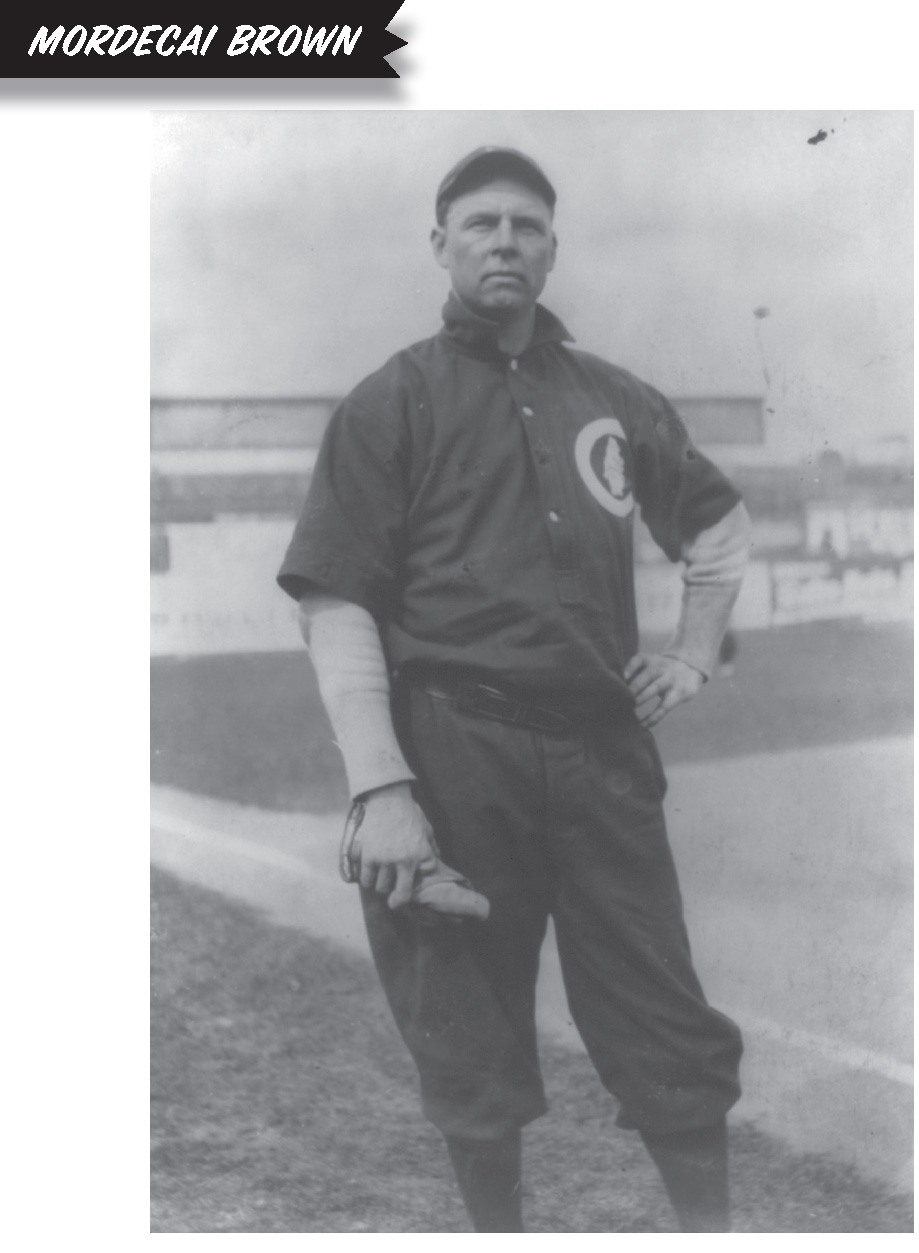
Pitcher Mordecai "Three Finger" Brown became one of the greatest pitchers in baseball despite losing most of a finger in a farming accident.
T HERE IS AN OLD SAYING THAT GOES, "Sometimes life throws you a curveball," which means life might not always be easy or go according to plan. That is exactly what happened to young Mordecai (MORE-duh-kye) Brown. Yet just because life threw Mordecai a curveball, he didn't give up. In fact, he learned to use his misfortune to help throw a curveball.
Born Mordecai Peter Centennial Brown in 1876 and named after the nation's centennial, Mordecai was raised on a farm in rural Indiana. One day when he was five years old, his life changed.
It began just like any other day. Mordecai and his older brother were doing their daily chores, helping out on the farm.
The boys' uncle kept livestock, and Mordecai and his brother liked to help with the feeding and care of the animals. On this particular day they had to prepare the feed. Instead of just giving the livestock bales of hay or cornstalks, Mordecai and his brother first had to chop the feed up so it would be easier for the animals to digest. They used a machine called a feed cutter.
The feed cutter used a series of sharp, circular blades that chopped the feed into small pieces. Mordecai's brother, being older and stronger, turned the crank on the machine that spun a series of gears and pulleys that made the blades spin and go up and down quickly. Mordecai's job was to place the feed in a chute that delivered it to the blades.
The boys had used the machine many times before and never had any trouble. On this day, however, something went wrong.
Mordecai might have become distracted or placed too much feed into the chute, but as he reached down and pushed the feed ahead, he went too far. The razor-sharp blades closed down on the fingers of his right hand.
Suddenly, all Mordecai and his brother saw was blood.
Mordecai instantly screamed out in pain and his brother immediately stopped cranking the machine. He helped Mordecai free his hand, but it was too late. Mordecai was badly cut, and blood spewed out everywhere. As Mordecai later recalled, his fingers were "chopped to ribbons."
The screams of Mordecai and his brother brought his uncle running to their aid. Deep gashes ran across Mordecai's right hand. His index, or pointing, finger hung limply by the skin.
His uncle quickly wrapped Mordecai's hand with cloth to slow the bleeding, bundled him up, put him in the back of a farm wagon, then harnessed one of his horses to the wagon and took off for the nearby town of Nyesville. Mordecai managed to stifle his tears and stayed nearly silent as the horse and wagon bounced over the dirt road toward town.
The town physician, Doc Gillum, had served as a surgeon in the Civil War. He was accustomed to treating severe injuries and it took him only a moment to assess the damage. Doc Gillum realized it would be impossible to save Mordecai's finger.
He gave the young boy some medicine to ease his pain and help him stay calm while Gillum cleaned the wounds. Then the doctor took out a sharp instrument and cut the damaged finger loose below the first knuckle, leaving only a short stump behind, and carefully sewed a flap of skin over the end. Several other fingers were broken and cut, so the doctor sewed together the wounds then applied splints to each finger to hold them straight while they healed. Then he wrapped the hand with bandages. Mordecai would live, but he would go through life with only three full fingers on his right hand.
Five weeks later Mordecai's fingers were still in splints and his hand was still wrapped in bandages, but he was healing quickly. At times he completely forgot that he had been in an accident. He was more interested in playing than worrying about his hand.
One day Mordecai and his sister wondered if rabbits could swim. To find out, they filled a tub with water and dropped their pet rabbit into the water. Although rabbits can swim, they don't like being in the water and the bunny began thrashing around. Little Mordecai leaned over into the tub toward the rabbit then tumbled in headfirst. As he did he instinctively reached out with his injured hand.
He broke his fall but felt sharp pains in his injured hand. When he unwrapped the bandages he saw that his fingers, particularly his middle finger, were bent and swollen. He had hurt his hand again, breaking six bones in his fingers.
"Don't tell Dad!" he told his sister. Mordecai was afraid that if his father found out he had broken his fingers that he would get in trouble. So instead of going to the doctor and having the fingers straightened out and placed in a splint, Mordecai gritted his teeth and bandaged the hand himself.
A few weeks later, when the bandages finally came off for good, he realized that was a mistake. Although the stump of the amputated finger and his cuts had healed, he could no longer straighten his little finger and his other fingers were bent and misshapen. His middle finger, in particular, zigzagged like a lightning bolt, bending first to the left and then to the right. When Doc Gillum got a look at it he thought about breaking the finger again to set it straight, but he decided Mordecai had been through enough. He would leave the finger as it wasand leave Mordecai with a permanently damaged hand.
Next page
